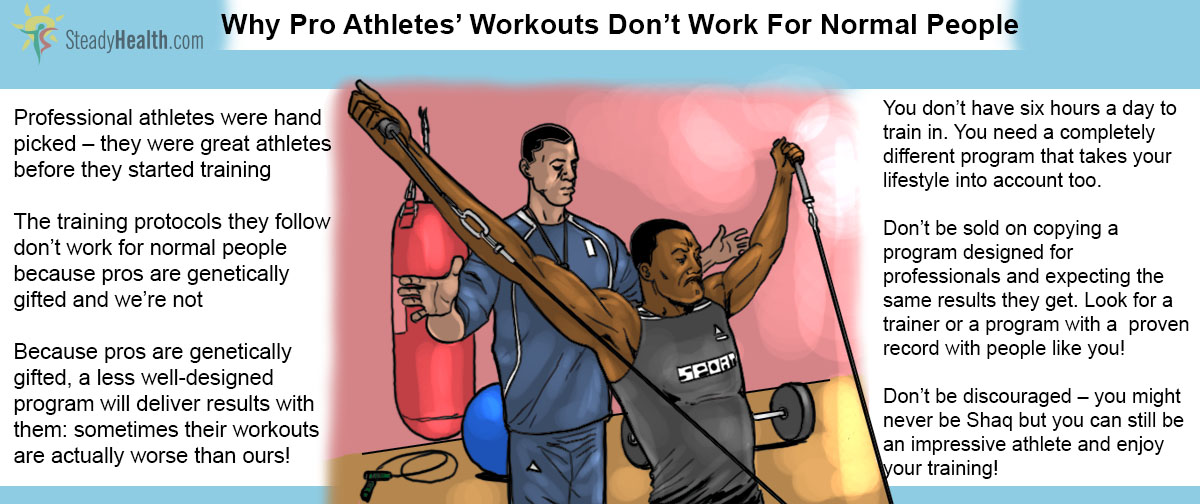Table of Contents
Professional athletes and their coaches are a great source of content for fitness sites and magazines. So you'll often see a pro MMA fighter on the front cover of Men's Health, or a celebrity coach on a women's fitness magazine cover. Look in sports magazines and it's even more pronounced, with professional athletes giving their input in depth, explaining what they eat and offering sets and rep schemes. It's most extreme in bodybuilding magazines where you'll often see a whole workout taken right from the training regime of a world champion -right next to an advert for whey supplementation.

These people are the best in the world at what they do. Surely when they talk, we should listen? After all, if you wanted a guide you'd want someone who'd been there before you, wouldn't you? Don't these people know how to get where they are? Surely their knowledge can benefit us?
In a word, no.
Professional athletes are where they are, doing what they're doing, because they're totally abnormal people. Doing their workouts isn't going to get you where they are.
Professional athletes are not like you and me. That's how come I didn't have to get up and do a radio interview at 5 this morning before going to the grounds for a three-hour training session. It's how come when I choose clothes, one thing I don't have to worry about is whether the branding is on show to keep my sponsors happy. I also don't have totally unusual genetics or totally unusual abilities. The yawning gap between professional athletes on the one hand, and you and me on the other, is probably best illustrated by two examples: basketball and bodybuilding. Take a look at a professional basketball team. What do you see? Chests. You have to tilt your head back to look at the faces, because all these guys are about seven feet tall. The average American man is 5'10" tall. The average professional basketball player is 6' 7" - quite a difference. You're not going to grow nine inches by doing box jumps, and many of the athletic abilities these people display - that get them into training in the first place - aren't very trainable either. Vertical jump, a key athletic metric and a key sign of someone who's one day going to be slam-dunking, is notoriously difficult to train.
Guess which population ends up on podiums? And that's before we talk about performance-enhancing drugs...
See Also: Plyometric Training Benefits For Team Sport Players
Pro athletes have a wealth of experience you and I don't have. By the time a professional athlete is my age - 32, in case you're wondering - he or she has probably spent more time competing that most of my contemporaries have spent training. These people aren't just genetic outliers: they were putting the time in in childhood and never stopped.
- Mind map by SteadyHealth.com
- Photo courtesy of MandoBarista by Flickr: www.flickr.com/photos/mandomail/10388671833
- Photo courtesy of Boemski by Flickr: www.flickr.com/photos/ggvic/2864392747


Your thoughts on this